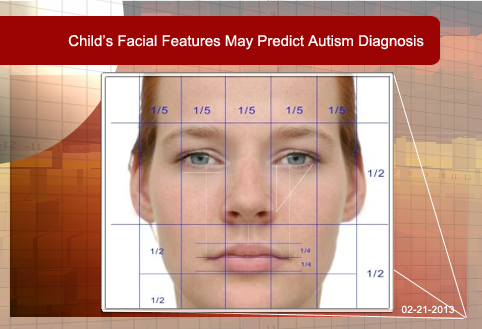Check out other stories from the Latest News
Child’s Facial Features May Predict Autism Diagnosis
By Shana R. Spindler, PhD on February 22, 2013

Background: Genes, small sections of DNA that code for proteins, control how the body develops and functions. Autism Spectrum Disorder (ASD) is known to have a strong genetic component. Some of the genes that contribute to autism may also help shape body and facial features. Researchers hypothesize that certain physical characteristics may predict an autism diagnosis.
What’s New: Researchers at University Medical Center in Utrecht, The Netherlands, and at the University of California, Los Angeles, discovered that facial asymmetry, abnormal hair whorls, and a prominent forehead are highly predictive of ASD in a Caucasian population. None of the abnormalities, however, linked to a specific ASD subgroup, such as Autistic disorder or Asperger syndrome. The collaborators published their findings in the January 2013 issue of the Journal of Autism and Developmental Disorders.
Why it’s important: Many doctors believe that early intervention can positively affect behavioral outcomes in children with autism, and evidence supports this claim. To date, the only way to diagnose autism is through careful observation of a child’s behavior. The current study suggests that the measurement of specific physical features may become a tool used by doctors to help predict an ASD diagnosis before behavioral problems arise.
Help me understand :
| Source(s) : |
| Tweet |

